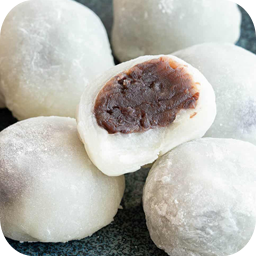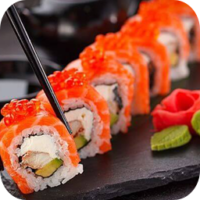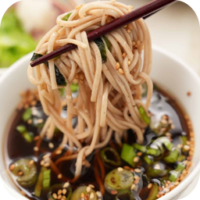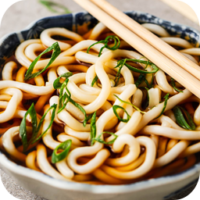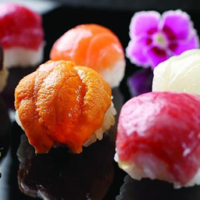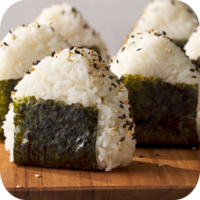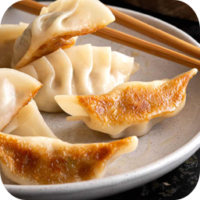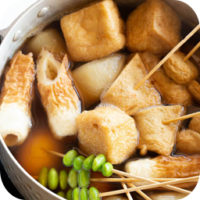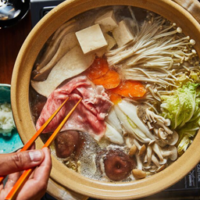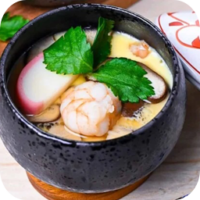Posted by theeatland
- Jan 1, 2025
- 70
- 0
Mochi (餅) is a traditional Japanese rice cake made from glutinous rice (also called mochi rice), which is pounded into a sticky, smooth, and chewy dough. It is a versatile ingredient in Japanese cuisine, often enjoyed on its own, in desserts, or as part of savory dishes.
Key Features of Mochi:
- Main Ingredient:
- Glutinous Rice (Mochi Rice): Unlike regular rice, glutinous rice has a higher starch content, making it sticky and chewy when pounded.
- Texture:
- Mochi is known for its chewy, elastic texture. It has a soft, almost gelatinous consistency that is beloved in many Japanese dishes.
- Preparation:
- Traditionally, mochi is made by pounding cooked glutinous rice in a large mortar (usu) using a wooden mallet (kine), but modern methods often involve machines or cooking rice flour (known as shiratama-ko).
Types of Mochi:
- Plain Mochi:
- Small, round rice cakes often served with a dusting of kinako (roasted soybean flour) or soy sauce for a simple treat.
- Daifuku Mochi:
- A popular variation where mochi is stuffed with various fillings like sweet red bean paste (anko), fruit, or ice cream.
- Mochi Ice Cream:
- A modern adaptation where mochi dough wraps around a small ball of ice cream, creating a chewy and cold treat. This variation has gained popularity worldwide.
- Kagami Mochi:
- A ceremonial mochi used during the New Year’s celebration, where two small mochi are stacked on top of each other and adorned with a decorative orange.
- Ohagi:
- Mochi rice wrapped in sweet red bean paste, often served during special occasions or festivals.
- Mochi Soup (Ozoni):
- Mochi pieces are served in a flavorful broth, often during the Japanese New Year’s celebration.
Cultural Significance:
- Mochi is deeply rooted in Japanese tradition. It’s associated with New Year’s celebrations, where it’s eaten in ozoni (a soup) or enjoyed as kagami mochi.
- In some areas, making mochi is a community event, often involving the pounding process, which is seen as a way to bring people together.
Fun Fact:
Mochi has a special significance in Japan’s New Year celebrations, as it’s believed to bring good luck and prosperity for the coming year.
Recommended Posts
- Jan 1, 2025
- 86 read
Sushi (寿司) is one of the most iconic and internationally recognized dishes...
Read Article- Jan 1, 2025
- 70 read
Okonomiyaki (お好み焼き) is a savory Japanese pancake made from a flour-based batter...
Read Article- Jan 1, 2025
- 101 read
Takoyaki (たこ焼き) is a popular Japanese street food consisting of octopus-filled dough...
Read Article- Jan 1, 2025
- 75 read
Soba (蕎麦) refers to traditional Japanese noodles made from buckwheat flour, although...
Read Article- Jan 1, 2025
- 106 read
Udon (うどん) is a traditional Japanese noodle dish made from wheat flour,...
Read Article- Jan 1, 2025
- 80 read
Tonkatsu (とんかつ) is a popular Japanese dish consisting of breaded and deep-fried...
Read Article- Jan 1, 2025
- 130 read
Yakitori (焼き鳥) is a popular Japanese dish consisting of grilled chicken skewers....
Read Article- Jan 1, 2025
- 72 read
Miso Soup (味噌汁) is a traditional Japanese soup made primarily from miso...
Read Article- Jan 1, 2025
- 78 read
Kaiseki (懐石) is a traditional multi-course Japanese meal that emphasizes seasonal ingredients,...
Read Article- Jan 1, 2025
- 74 read
Onigiri (おにぎり) is a traditional Japanese rice ball, often shaped into triangles...
Read Article- Jan 1, 2025
- 72 read
Unagi (鰻) is the Japanese word for eel, specifically the freshwater eel...
Read Article- Jan 1, 2025
- 64 read
Gyoza (餃子) is a popular Japanese dish consisting of dumplings filled with...
Read Article- Jan 1, 2025
- 77 read
Oden (おでん) is a traditional Japanese winter comfort food that consists of...
Read Article- Jan 1, 2025
- 64 read
Shabu-Shabu (しゃぶしゃぶ) is a popular Japanese hotpot dish, characterized by thinly sliced...
Read Article- Jan 1, 2025
- 76 read
Chawanmushi (茶碗蒸し) is a traditional Japanese savory egg custard dish. Its name...
Read Article- Jan 1, 2025
- 68 read
Taiyaki (鯛焼き) is a popular Japanese fish-shaped pastry filled with sweet or...
Read Article
